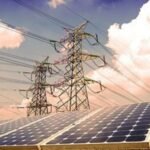Electrification has emerged as a transformative force, driving the transition towards a more sustainable and environmentally friendly future. This comprehensive exploration delves into the intricacies of electrification, unraveling its fundamental principles, key components, recent innovations, notable applications, and the transformative impact it has on reshaping the landscape of energy consumption, transportation, and various industries.
Understanding Electrification
Electrification refers to the widespread adoption and utilization of electricity as the primary power source in various sectors, replacing traditional fossil fuels. This shift towards electrification is driven by the need to decrease greenhouse gas emissions, combat climate change, and create more energy-efficient systems.
Key Components of Electrification
The core components of electrification contribute to its functionality, efficiency, and overall impact on modernizing various sectors:
- Electric Power Generation: The production of electricity from diverse sources, including renewable energy, nuclear power, and conventional power plants.
- Transmission and Distribution: The infrastructure that transports electricity from generation facilities to end-users, involving an interconnected grid system.
- End-Use Applications: Integrating electric power into various applications such as transportation, heating, industrial processes, and residential energy use.
Recent Innovations in Electrification
Recent innovations have propelled electrification to new heights, addressing challenges and expanding its applications. Notable advancements include improvements in energy storage, the electrification of transportation, and the integration of smart technologies.
Advancements in Energy Storage
Energy storage technologies, such as advanced batteries and supercapacitors, enhance the efficiency and reliability of electrification. These innovations contribute to grid stability, support intermittent renewable energy sources, and enable the storage of excess energy for later use.
Electrification of Transportation
The shift towards electric vehicles (EVs) and electrified public transportation is a significant innovation in electrification. Advances in battery technology, charging infrastructure, and the development of electric cars contribute to reducing carbon emissions from the transportation sector.
Smart Grid Technologies
Integrating smart grid technologies allows for more efficient management of electricity distribution. Smart grids enable real-time monitoring, demand response mechanisms, and dynamic adjustments, ensuring optimal energy utilization and grid stability.
Notable Applications of Electrification
Electrification has diverse applications across various sectors, contributing to sustainability, efficiency, and reduced environmental impact.
Electric Vehicles
The electrification of transportation through electric vehicles is a notable application. EVs reduce reliance on fossil fuels, decrease air pollution, and contribute to a more sustainable and cleaner urban environment.
Electrified Heating and Cooling
Using electric heating systems, heat pumps, and electric cooling technologies in residential and commercial spaces is a significant application of electrification. These systems offer energy-efficient alternatives to traditional heating and cooling methods.
Challenges in Electrification
Despite significant advancements, electrification faces challenges that impact its widespread adoption and effectiveness. Addressing these challenges is crucial for electrified systems’ continued growth and integration.
Energy Storage Costs
The upfront costs of energy storage technologies, critical for controlling the intermittency of renewable energy sources, can be a barrier to widespread adoption. Ongoing research focuses on reducing costs and improving the scalability of energy storage solutions.
Infrastructure Transition
The transition to widespread electrification requires significant changes to existing infrastructure, including the development of robust charging networks for electric vehicles and upgrades to the electricity grid. Coordinated efforts are essential to overcome these challenges.
Future Trends in Electrification
The trajectory of electrification indicates exciting trends that will further redefine its capabilities and applications. These trends promise to enhance efficiency, improve sustainability, and contribute to the overall resilience of energy systems.
Electrification of Industry
The electrification of industrial processes is an emerging trend. Utilizing electric power in manufacturing, processing, and other industrial applications can reduce emissions and improve energy efficiency.
Electrification in Developing Regions
Efforts to bring electrification to developing regions, particularly through off-grid and renewable energy solutions, are gaining momentum. This trend aims to improve access to clean and reliable energy sources, fostering economic development.
Conclusion
Electrification is a cornerstone in the global pursuit of a sustainable, low-carbon future. From advancements in energy storage and the electrification of transportation to the integration of smart technologies, the impact of electrification extends across diverse sectors. Despite challenges, ongoing innovations in infrastructure development, energy storage, and industrial electrification signal a promising future for electrification. As research and development continue to push the boundaries of what is possible, electrification is poised to play a central role in shaping a cleaner, more efficient, and technologically advanced energy landscape.











